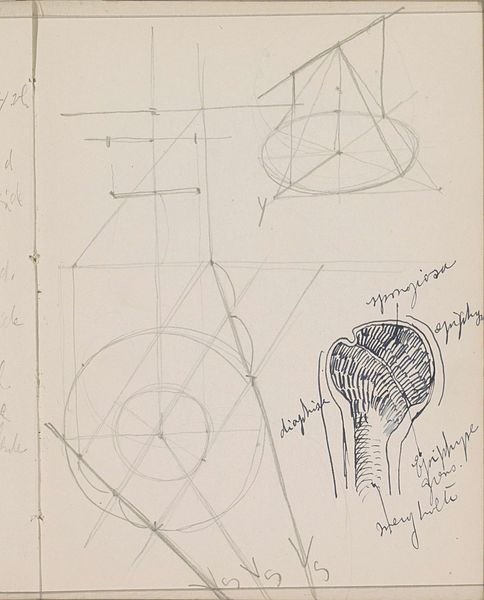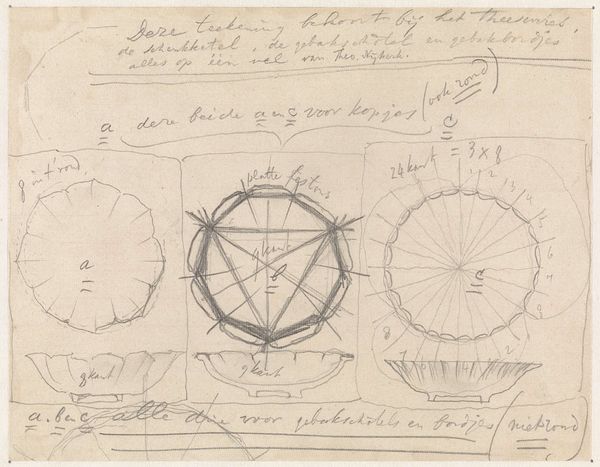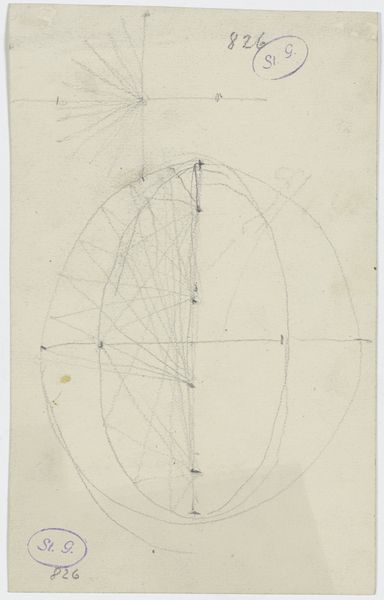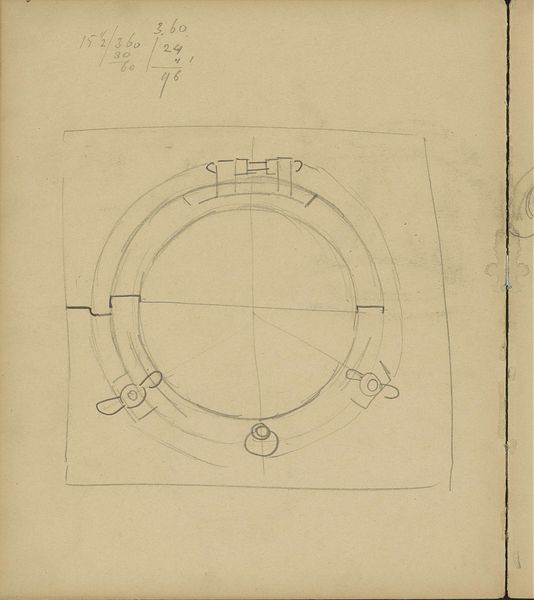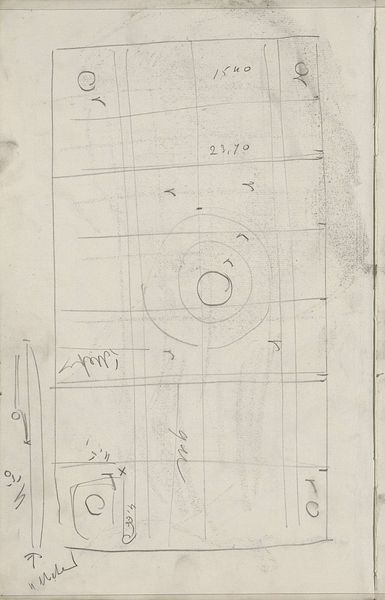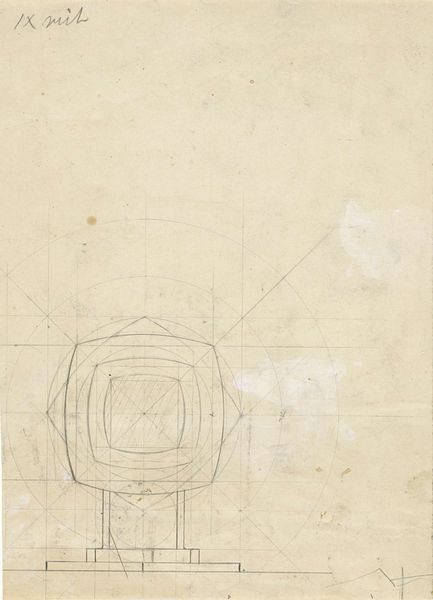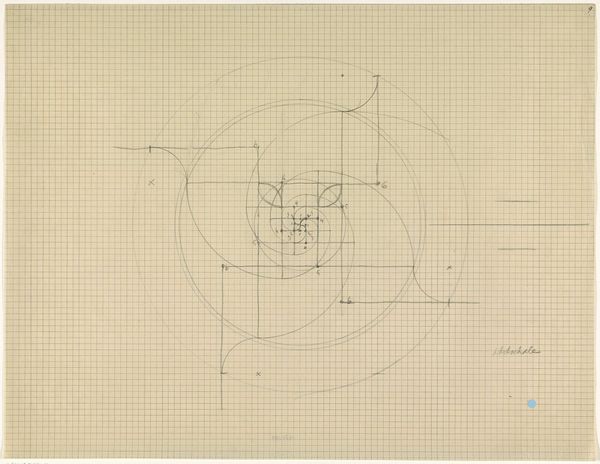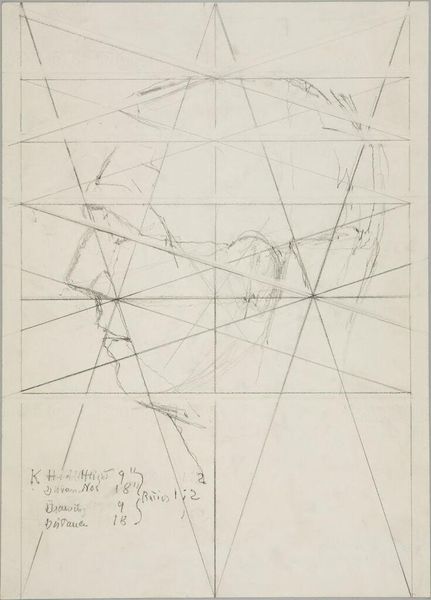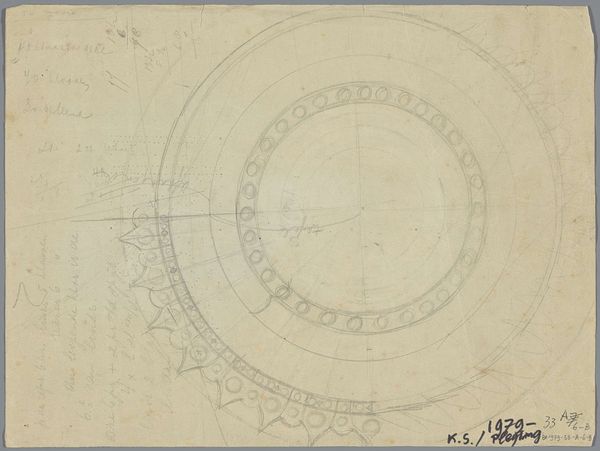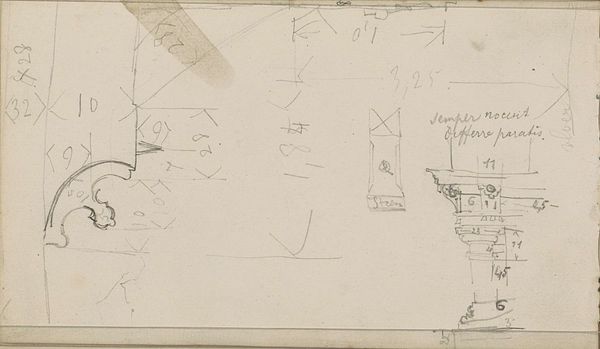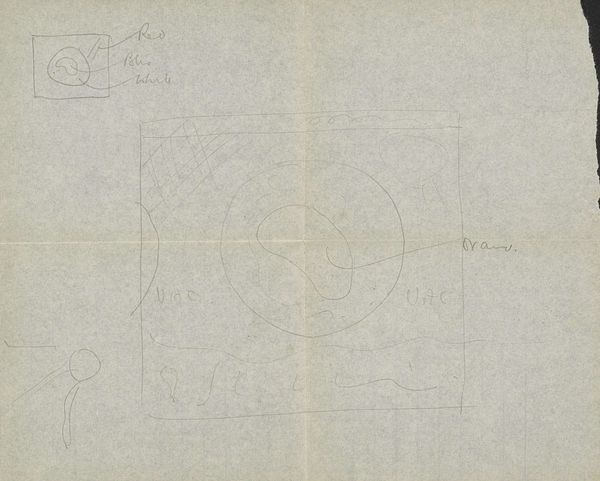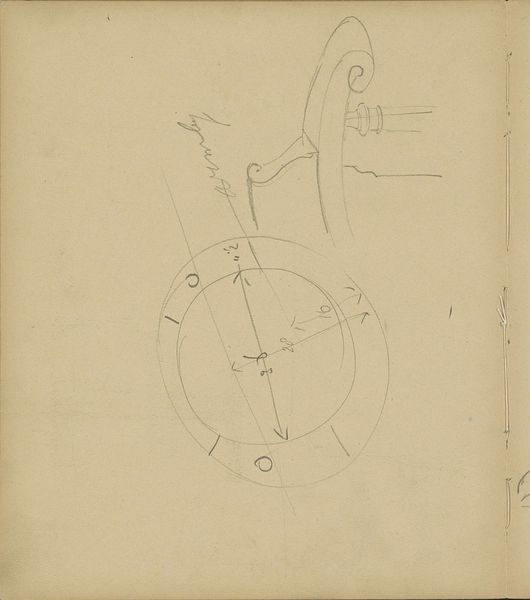
drawing, pencil
#
drawing
#
geometric
#
pencil
#
abstraction
#
modernism
Dimensions: height 237 mm, width 208 mm
Copyright: Rijks Museum: Open Domain
Curator: Here we have Theo Colenbrander’s “Diagram met cirkels,” a pencil drawing that was made sometime between 1851 and 1930. Editor: My initial impression is one of architectural preplanning. The drawing is intricate but incredibly faint—it feels skeletal, like the ghost of a building yet to exist. Curator: It's interesting you say that. Colenbrander's wider body of work and life intersect with a specific cultural moment; Modernism attempted to redefine domestic space. This was when traditional crafts were being threatened by industrialization and were often seen in relation to national identity formation and resistance to colonialism. I think it offers an important statement of resisting prescribed spaces of living. Editor: I see your point, however, what is intriguing to me are the geometrical forms which intersect and interact to determine an order or pattern. This visual language suggests to me something deeper, almost like sacred geometry being deployed, the circles and intersections representing harmonies found in nature itself. Look how circles expand and intersect one another; it creates such dynamic equilibrium. Curator: While the circles themselves point to universal ideas, perhaps. I see something quite different going on when I turn my attention to the written language and symbols surrounding these figures. Some suggest direction while others suggest quantity; these inscriptions serve almost as marginalia or meta-commentary, undermining what one may perceive as universally harmonic and symmetrical with a sense of a flawed diagram—reminding us of Modernism’s own failed ideals. Editor: Perhaps these notations don’t have to oppose, but complement one another. Just because something appears utilitarian on the surface doesn’t mean that inherent symbolic and philosophical systems aren’t embedded within it. Curator: Well, this certainly highlights how a drawing intended for design ends up opening doors for considerations about space, symbolic language, and failed architectural dreams! Editor: Indeed! By considering both composition and concept, perhaps this opens more discussion on geometry, identity and the artist’s intention.
Comments
No comments
Be the first to comment and join the conversation on the ultimate creative platform.

